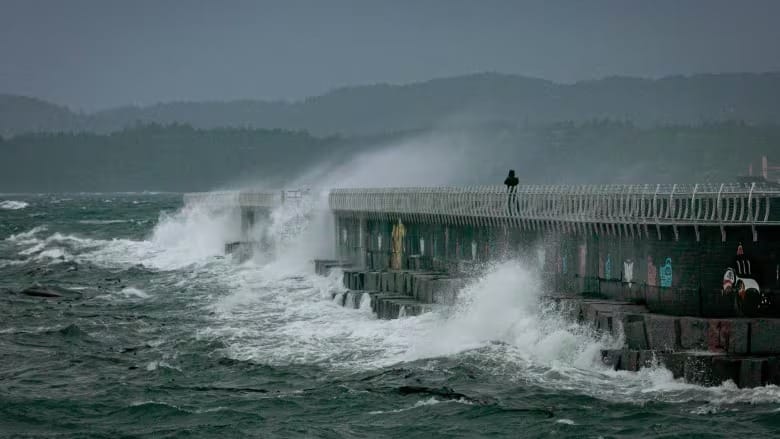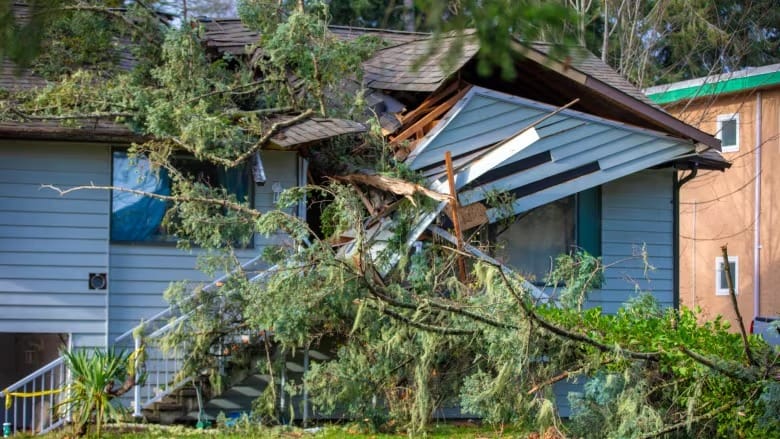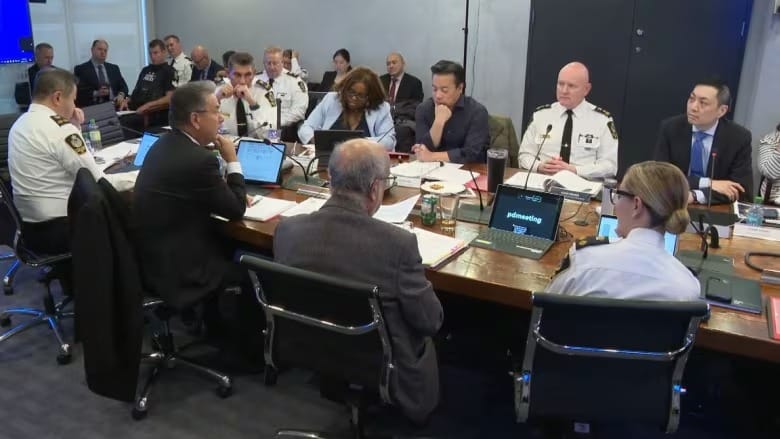Highways closed, thousands without power as 'bomb cyclone' hits B.C. coast
Wind warnings span coast and Vancouver Island, with gusts as high as 159 km/h reported

Powerful "Bomb Cyclone" Hits B.C.'s South Coast, Causing Power Outages and Road Closures
A severe "bomb cyclone" struck British Columbia's South Coast on Tuesday night, bringing wind gusts as high as 160 km/h. The storm led to highway closures, widespread power outages, and disruptions across the region, including forcing a group of school children on Vancouver Island to shelter in a school for hours.
Widespread Power Outages
By 9:40 p.m. PT, over 140,000 residents on Vancouver Island and another 48,000 in the Lower Mainland were without power. Crews worked through the night to address the damage caused by the storm, which included fallen trees and downed power lines.
School Children Forced to Shelter
The Sooke School District reported that power lines brought down along Highway 14 disrupted school bus routes. Nine students from Port Renfrew and the Pacheedaht First Nation were stranded with their bus driver and had to take shelter in a nearby school. They were provided dinner and waited until the highway reopened. The district confirmed the children safely returned home just before 10 p.m.
Highway Closures and Accidents
High winds caused multiple road closures across Vancouver Island, including Highways 4, 14, 18, 28, and the Pacific Marine Circle Route. In Port Alberni, a tree fell on a logging truck, causing significant damage to the vehicle but leaving the driver unharmed.
Ferry Cancellations and Travel Disruptions
Strong winds prompted ferry cancellations, including several evening sailings between the Lower Mainland, Vancouver Island, the Sunshine Coast, and the Southern Gulf Islands. Travelers were advised to check schedules before heading out.
Understanding the Bomb Cyclone
A "bomb cyclone" forms when masses of warm and cold air collide, creating spiraling winds and a rapid pressure drop of over 24 millibars within 24 hours. This storm, which developed 400 kilometers west of Tofino, experienced a pressure drop of nearly 60 millibars in 24 hours—an event rarely seen in B.C.
Forecasters compared the storm’s central pressure to that of a Category 3 or 4 hurricane. Waves exceeding 10 meters were reported west of Vancouver Island, with expectations of further intensification overnight.
Warnings and Preparations
Environment Canada issued wind warnings across B.C.'s coast, forecasting gusts of up to 120 km/h. Inland regions also received special weather statements warning of significant rain and snow at higher elevations.
Meteorologists cautioned that this was the first strong wind event from the current direction this season, making trees more susceptible to falling and increasing the likelihood of power outages.
Storm Response Efforts
Utility crews were dispatched to remote areas ahead of the storm to expedite repair and restoration efforts. Highways remained closed until debris could be safely cleared, and B.C. Hydro prioritized restoring power to affected regions.
Tuesday’s bomb cyclone is the second major windstorm to hit the South Coast this month, following a similar event on November 12 that left tens of thousands without power.





